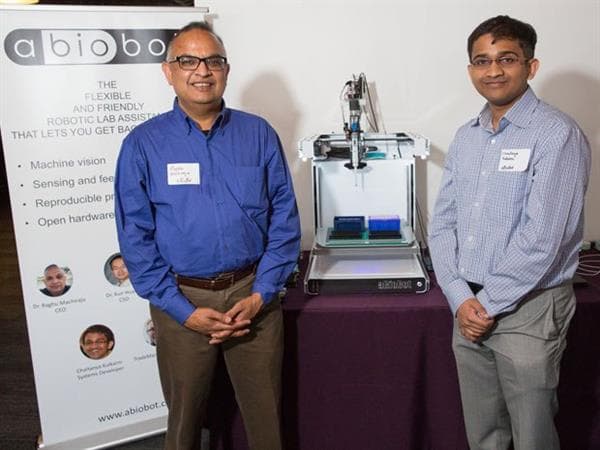
How Data Centers are Saving Energy
May 25, 2016
Friday Fun Blog: Thailand Bites Your Snake Edition
May 27, 2016If there’s one thing that’s the bane of a scientist’s existence, it’s patience. The rest of the world moves so quickly—and yet scientists often have to wait long amounts of time and put in countless hours to get the next breakthrough.
Much of this slow progress is caused by tedious tasks in the lab. They aren’t just inconvenient, either—they can delay important discoveries that would be beneficial for all humanity.
Take, for example, pipetting—a process where an eyedropper-like tool is used to measure, move and dispense chemicals and matter into pipettes of various designs, performance, and durability. aBioBot, a tech startup in San Francisco, says that the pipetting process is “slow, inaccurate, boring, and causes repetitive strain injuries.”

Photo Credit: 3ders.org
Scientists simply don’t have the time or the patience to do the process properly. They have better ways of using their time—so why not let a robot do the boring work?
A Pipetting Robot Lab Assistant
aBioBot has created a robot lab assistant that automates pipetting so scientists can focus on science. The open-source robot is made from a modified 3D printer.
Dr. Raghu Machiraju, the startup’s founder and CEO, came up with the concept of aBioBot from his own experiences in the lab. While he is a professor in the Computer Science department at Ohio State University, he also has dabbled in cancer research and bioinformatics. Of course, he has spent numerous hours cleaning up accidents from bad pipetting experiments.
Luckily, Dr. Machiraju’s dabbling in technology led him to 3D printing, which inspired him to create aBioBot.
How the Robot Works
While aBioBot is certainly not the first to assist scientists with lab processes, two things make it unique: its sensors and its interface.
Yan is a sensor system that acts as the “eyes” of the robot. This means the robot can actually see what it’s doing so it doesn’t drop a pipette by accident. The sensors scan the area around the robot and are able to detect if a pipette has been dropped or blocked. Yan helps aBioBot improve the safety of this process while also being more careful. It uses Python and the OpenCV library.
The robot’s web browser interface dubbed LabBench, tracks and records the experiment’s progress onto an online record book called LabCloud. The records host logs, reports, and videos of each aBioBot experiment. The user interface makes use of HTML5, JavaScript and Bootstrap.
Users can access a “book” of favorite protocols through LabBench—the protocols are saved after any change is made. A user can also import procedures and notebooks into an authoring tool called LabSmith. All of these materials can be modified as needed.
aBioBot’s API’s have been ported onto three 3D printer-based hardware platforms, which will serve as the company’s first prototypes. aBioBot is also currently developing software. Both the sensor and web interface will be available through open APIs.
aBioBot is now working to develop automated protein assays and make improvements to their prototype robots. While we are still far from making a robot that can make tasks seem like an indie movie montage, it will definitely speed up lab processes and help scientists focus on their discoveries.
